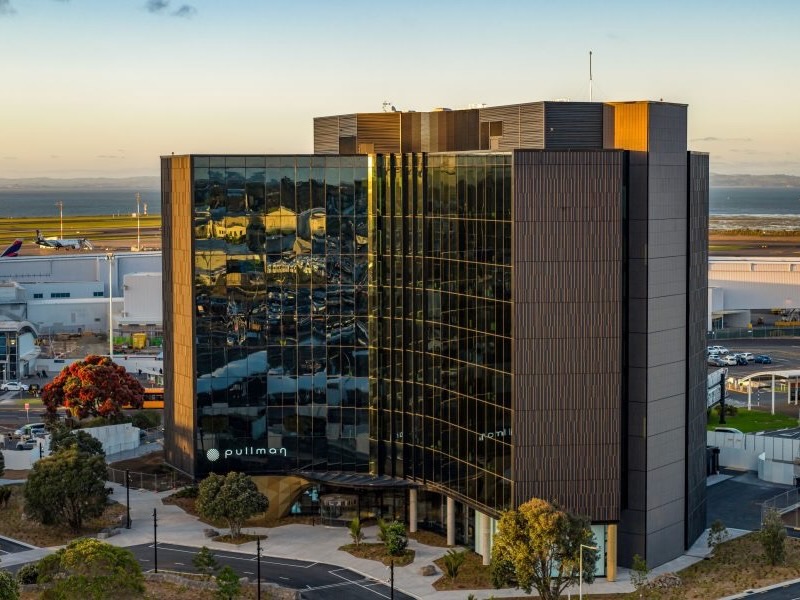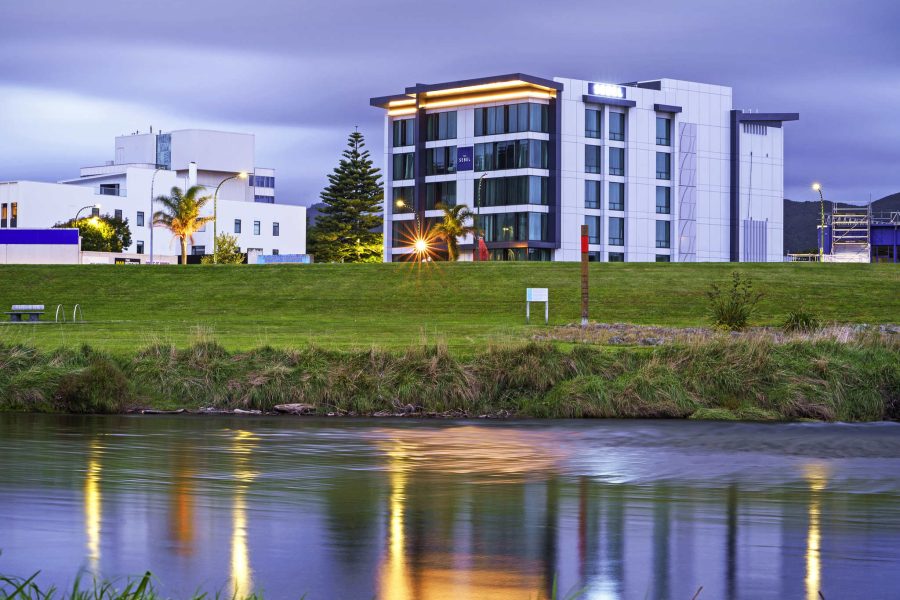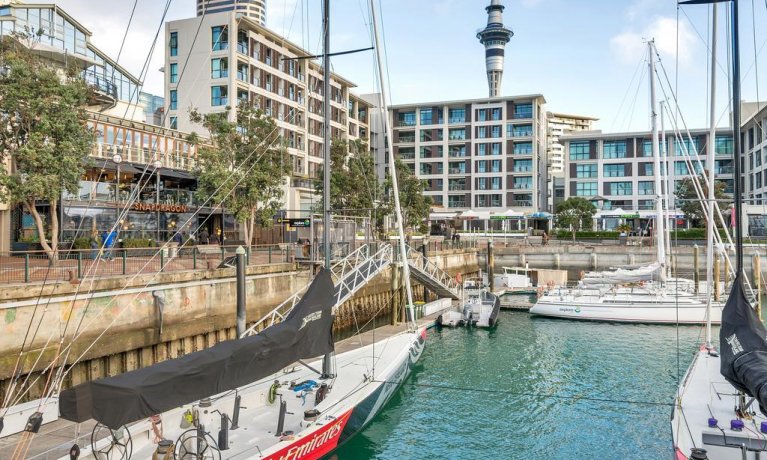
Average weekly occupancy across Christchurch’s hotels has surged over 90%, according to figures from STR.

Auckland has had a good February with average weekly occupancy and ADR climbing to a summer high last week, according to figures from STR.

Average weekly occupancy across New Zealand has been hovering just above 70% since mid-January, according to figures from STR.

The strong summer has seen Queenstown’s hotel market recover to pre-Covid levels, according to figures from STR.

Activity across Wellington has been growing steadily since mid-January, according to figures from STR.

Christchurch was the best performing of the city markets in terms of occupancy.

Average weekly hotel occupancy across New Zealand slid to 56% in mid-December, according to figures from STR, as the major metropolitan markets saw demand fall as expected before the Christmas break.

Average weekly occupancy across New Zealand fell last week with all major markets sliding into the first week of summer, according to figures from STR.

Auckland’s hotel market has enjoyed a strong end to spring, according to figures from STR.

Queenstown Marathon last Saturday lifted occupancy across the resort to a new 2023 high, according to figures from STR.

There may be political limbo in Wellington following the 14 October general election, but at least the capital’s hotel market appears to be exiting spring on a consistent trend up, according to figures from STR.

Christchurch’s hotel market appears to be ending spring on a high, according to figures from STR.

Occupancy and ADR trends across New Zealand’s major hotel markets appear to be normalising, according to figures from STR.

Queenstown occupancy and average daily rate have been trending down since the 2023 high seen in early September, according to figures from STR.

After a decent start to spring for the capital’s hotels, Wellington has been sliding out of the season with steady falls in both occupancy and average daily rate over recent weeks, according to figures from STR.

Occupancy across New Zealand’s largest hotel market has fluctuated in spring between 60% and 75%, according to figures from STR.

Average weekly occupancy and ADR across Christchurch has been relatively steady since the start of spring, according to figures from STR.

New Zealand’s hotels have seen a good start to spring with average weekly occupancy across the country rising from 62% for the first week in September to over 70% last week.

Christchurch occupancy has been sliding steadily since mid-August, with little in the way of major events to give the city a boost.

The Snow Machine music event and the Winter Games have helped lift hotel occupancy to a 2023 high across Queenstown, according to figures from STR.

While Wellington enjoyed a sharp jump in occupancy and ADR during the early stages of the FIFA Women’s World Cup in late July, those metrics have been sliding since, according to figures from STR.

Hotel occupancy across the city has been falling since late July but is still much better than last year.

Queenstown’s hotels are finishing the winter months on a new high, according to figures from STR.

Average weekly occupancy across New Zealand’s hotels started to slide in August from a late-July high, according to figures from STR.

Despite not hosting any FIFA Women’s World Cup matches, Christchurch’s hotels still appear to benefiting, according to figures from STR.

The capital has enjoyed a sharp increase in hotel occupancy and ADR since the start of the FIFA Women’s World Cup.

A big week of sport has given Auckland’s hotels a nice mid-winter boost, with occupancy nearing 76%, according to figures from STR.

Average weekly occupancy across New Zealand’s hotel market dipped last week, according to figures from STR.

Queenstown’s hotels are enjoying a good mid-year holiday period with average weekly occupancy hitting a 2023 high last week, according to figures from STR.

Auckland occupancy has been rising steadily since early June with last week the best since Easter in April, according to figures from STR.

After sliding following TRENZ in early May, Christchurch occupancy has seen a decent start to winter, according to figures from STR.

The opening of the ski season has finally turned around occupancy in Queenstown with the first consistent increases – albeit modest – seen since the Easter and school holidays in April.

Wellington is the first of the major NZ hotel markets to record occupancy down on 2022.

Hotel occupancy across New Zealand’s largest hotel market was steady over May, hovering around 65%, according to figures from STR.

Average weekly occupancy across New Zealand’s whole hotel market was relatively stable over May and enters winter at around 60%, according to figures from STR.

Queenstown’s hotel market appears to have bottomed out with average weekly occupancy hovering around 56% for the past couple of weeks, according to figures from STR.

TRENZ 2023 at Te Pae Christchurch saw the southern city report the best occupancy rates of the country’s major hotel markets.

Wellington’s occupancy rate bounced back last week after sliding for most of March and April, although the lift may prove to be shortlived.

Hotel occupancy across Auckland fell after the series of holidays enjoyed in April, which started with Easter, followed by the end of term one school holidays, and then ANZAC Day last week.

Most of New Zealand’s major hotel markets managed to arrest the autumn occupancy slide seen in March to bounce back in April.

Queenstown received a small bump in occupancy during the Easter break and the first week of the school holidays, according to figures from STR.

Wellington’s hotel market has cooled with the average weekly occupancy high of 87% seen in late February sliding below 60% in the week to Easter.

With all of the country’s major hotel markets sliding into the middle of autumn, Christchurch appears to be holding up best.

New Zealand’s major hotel markets appear to have experienced a rarity during the recovery – a steady, stable month not unduly influenced by weather extremes, strong growth due to border openings, or any other major issue, save possibly ongoing capacity constraints due to staff shortages.

The country’s largest hotel market has seen off summer’s extreme weather to stabilise at just above 80% occupancy since late February.

Average weekly occupancy across Queenstown has remained stable at around 75% – 80% since early February, indicating good demand from international visitors, who typically give the resort a boost after Kiwis return to work and school.

Christchurch’s strong run of occupancy growth came to an end last week, with the city’s hotel market sliding back for the first time since the post-Elton John bump in late January.

Ed Sheeran’s concert at Wellington’s Sky Stadium in early February gave the capital’s hotel market a timely shot in the arm following the summer slumber.

The country’s hotel market continued to strengthen into late summer despite the extreme weather seen in parts of North Island.

Average weekly occupancy across Auckland has been climbing steadily since the start of the year with the impacts of the city’s destructive deluge three weeks ago on its hotel market seen as a shortlived dip.